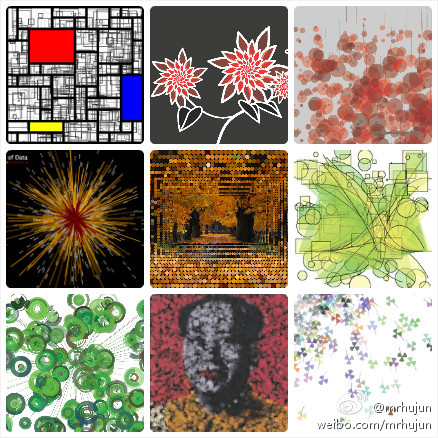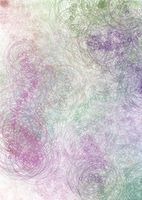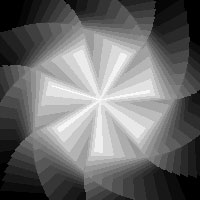|
Size: 8730
Comment:
|
← Revision 12 as of 2015-02-10 23:41:16 ⇥
Size: 8769
Comment:
|
| Deletions are marked like this. | Additions are marked like this. |
| Line 122: | Line 122: |
| * Examples: [[attachment:PachubeExamples.zip]] | * Examples: [[attachment:PachubeExamples.zip]], [[attachment:ThinkspeakExamples.zip]] |
Creative Programming and Embedded Systems 2015
(c) 2015 Jun Hu
In the module Creative Programming and Embedded System we will learn how to make experiential prototypes with visuals, sensors, actuators and computation. The module consists of lectures that covers topics such as structural programming, object oriented programming, GUI, computer vision, 2D and 3D graphics, micro-controllers, serial communication, networking and internet of things. Students are challenged to deliver a static art work in Processing, and an interactive prototype using both Processing and Arduino. The module takes 2 weeks, in which 30% of the time is used for lectures, and the rest for students to work on the challenges.
 Please notice that the planning and the content of the course is subject to frequent change. Please do check back often.
Please notice that the planning and the content of the course is subject to frequent change. Please do check back often. - Please bring a laptop with you to the class. Windows is preferred.
- Please bring with you the power adapter for your laptop.
 Before you come to the first lecture, please download the following files to your laptop:
Before you come to the first lecture, please download the following files to your laptop: Download the Processing programming environment. Go to the Processing website, download it from there. Do not download the version "without java". Having downloaded it, leave it on your computer and do not install it yet. We will do it together during the first lecture.
It would be convenient to have hard copies of these books. Please see below the references for the details. You can buy these books from http://www.amazon.com/
- Before you come to the lecture for the third part, please
download and install Arduino: http://arduino.cc/en/Main/Software. It would be convenient if Arduino is installed at the same place you installed Processing.
- Bring your Arduino starter kit to the class.
 For those who graduated from the department of Industrial Design, TU/e, you might have learned most of the things in this module. You will be challenged to investigate the possibilities of Raspberry PI, and share your findings with the others.
For those who graduated from the department of Industrial Design, TU/e, you might have learned most of the things in this module. You will be challenged to investigate the possibilities of Raspberry PI, and share your findings with the others.
Contents
1. Schedule

2. Part 1: Processing Basics
2.1. Challenge
- Creating static visual arts. At the end of this part, every student is expected to be able to
- Create an artistic poster that demonstrates beauty and complexity, using Processing
- Print the result and present with a frame, or on a form board.
- Examples for inspiration

Source code of the last example above: TriangleFlowerPDF.zip
2.2. Skills needed to meet the challenge
- Get acquainted with the Processing programming environment
- Be able to understand and to make use of the following concepts
- 2D Graphics
Examples>Books>Getting Started>Chapter02
- Variables and control flows
Examples: VBL_sheets.zip
- Arrays and Functions
Examples: FunctionsAndArraysExamples.zip
- PDF output
Example: TriangleFlowerPDF.zip
- 2D Graphics
2.3. Extra reading
Read the Chapters 1, 2, 3, 4, 6(Fonts), 7(Translate, Rotate, Scale), 8, 10(Make an Array, Repetition and Arrays) and 11(Image Export) from the book Getting Started with Processing. Try to experiment with the examples.
In the example for PDF output (TriangleFlowerPDF.zip), we used a recursive function call to triBlur(). What is a recursive function call? Read 13.10 Recursion (p.216-220) in the book Learning Processing.
3. Part 2: Processing Advanced
3.1. Challenge
- Create interactive visual arts. At the end of this part, every student is expected to be able to create an interactive installation that
- uses mouse or keyboard input, and
- as output, dynamically render visual arts in real time as output.
3.2. Skills needed to meet the challenge
- Be able to understand and to make use of the following concepts
- Object orientation (classes and objects)
- Mouse and keyboard, GUI
Library: ControlP5
3.3. Extra reading
Try to complete the book Getting Started with Processing, except section "Hello Arduino" in Chapter 11. If you encounter difficulties, do not stick to it. Mark it, leave it and continue reading. You may visit the marked parts later when you gain more confidence.
- Pay attention to the topics about images. We did not cover them in the lectures. You have to learn it yourself if you need them.
- For more about controlP5, refer to the documentations and examples.
4. Part 3: Introducing Arduino
4.1. Challenge
- Create interactive visual arts. At the end of this part, every student is expected to be able to create an interactive installation that
- uses sensors connected to Arduino as input
- as output, dynamically render visual arts in real time as output.
Or pick up an interesting example from the book Make Things Talk, modified for a different purpose, using different sensors and actuators.
4.2. Skills needed to meet the challenge
- Understand the basics of the Arduino Hardware
- Be able to program and debug Arduino
- Be able to connect Processing and Arduino using Seiral libraries
4.3. Extra reading
Getting Started with Arduino
Getting Started with Processing, chapter 11, section Hello Arduino.
5. Part 4: Advanced topics
5.1. Challenge
- Create interactive visual arts. At the end of this part, every student is expected to be able to create an interactive installation that
- uses sensors connected to Arduino as input
- The input is then transferred to a remote computer (using either Client/Server networking or Pachube service)
- as output, dynamically render visual arts in real time as output.
- Or anything else that is interesting and that integrates Arduino, Processing and networking.
5.2. Skills needed to meet the challenge
- Network (client/server)
Examples: ClientServerExamples.zip
- Internet of things
Download and install EEML library in Processing.
Examples: PachubeExamples.zip, ThinkspeakExamples.zip
6. References
- Websites
Getting Started with Processing, by Casey Reas and Ben Fry. Published June 2010, O'Reilly Media. 208 pages. Paperback. GSProcessing.pdf
Learning Processing: A Beginner's Guide to Programming Images, Animation, and Interaction, by Daniel Shiffman. Published August 2008, Morgan Kaufmann. 450 pages. Paperback.
Getting Started with Arduino, by Massimo Banzi, Publisher: O'Reilly Media / Make, Released: December 2008 GSArduino.pdf
Making Things Talk: Practical Methods for Connecting Physical Objects, by Tom Igoe, Publisher: O'Reilly Media / Make, Released: September 2007



